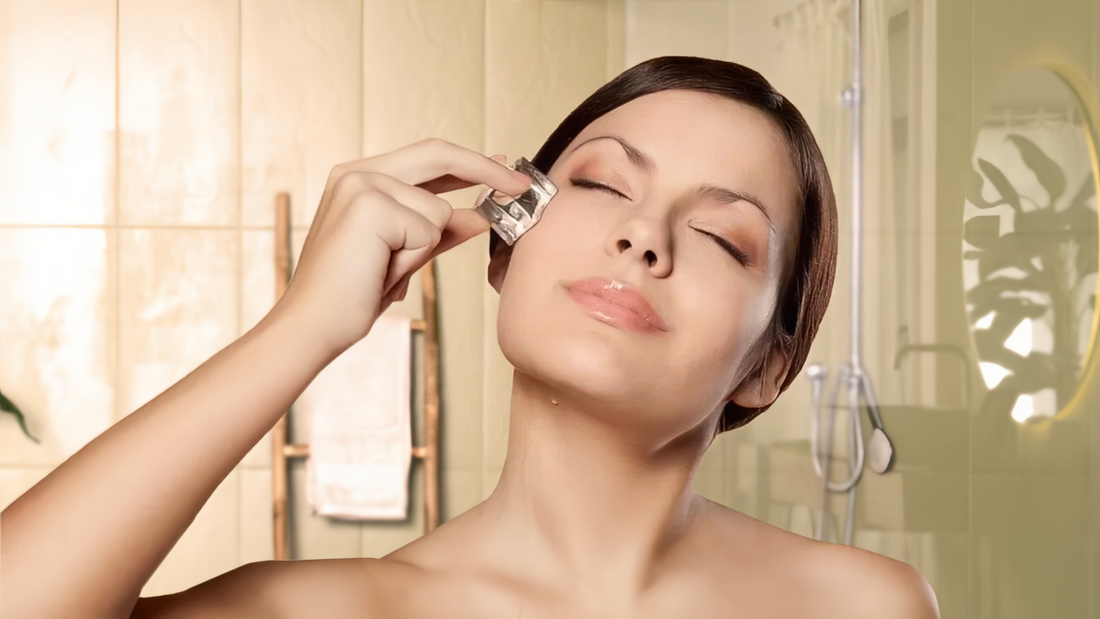News
Skincare Guide for Every Skin Type: Achieve Healthy, Radiant Skin
Part 1: Understanding Your Skin Type & Core Skincare Principles
Achieving radiant, healthy skin is not about following the latest trend blindly or buying every new product on the market. It begins with understanding your skin, its unique characteristics, and the precise care it requires. By 2025, beauty enthusiasts are becoming increasingly aware that a one-size-fits-all approach simply doesn’t work. Every individual has distinct needs shaped by genetics, environment, lifestyle, and age. The foundation of any effective skincare regimen lies in recognizing your skin type, learning its behaviors, and establishing routines that protect, nourish, and enhance natural beauty.
Why Knowing Your Skin Type Matters
Knowing your skin type is the first step toward intelligent skincare. It allows you to select products that complement your skin’s natural tendencies, rather than exacerbate existing concerns. For instance, using heavy creams on oily skin can lead to clogged pores and breakouts, while choosing harsh exfoliants for dry or sensitive skin can cause irritation and redness. Understanding your skin type empowers you to make informed choices about cleansers, serums, moisturizers, and even makeup, ensuring that your routine enhances both health and appearance.
Moreover, as the industry evolves, personalized skincare solutions—ranging from AI-driven product recommendations to bespoke serums—depend entirely on knowing your skin’s unique profile. With this knowledge, you can invest in products that deliver tangible results, rather than relying solely on marketing claims.
The Five Main Skin Types
Skin types are commonly categorized into five main types: dry, oily, combination, sensitive, and normal. Each type exhibits distinctive characteristics and requires a tailored approach.
1. Dry Skin
Dry skin often feels tight, rough, or flaky, particularly after cleansing. It may appear dull and lack natural radiance, making fine lines more noticeable. Contributing factors include genetics, aging, harsh climates, and inappropriate skincare products. Dry skin requires hydrating, lipid-rich products that restore the skin barrier and prevent moisture loss. Ingredients like ceramides, hyaluronic acid, and squalane are essential for maintaining suppleness and preventing irritation.
People with dry skin should avoid over-washing, alcohol-based toners, or harsh exfoliants that strip essential oils. Gentle cleansing, intense hydration, and protective creams are crucial steps in maintaining comfort and glow.
2. Oily Skin
Oily skin produces excess sebum, often resulting in a shiny complexion, visible pores, and a higher propensity for acne and blackheads. Contrary to common belief, oily skin still requires moisturizing—simply selecting lightweight, non-comedogenic formulations ensures hydration without clogging pores.
Key ingredients for oily skin include niacinamide (to regulate sebum production), salicylic acid (to prevent clogged pores), and gel-based moisturizers that absorb quickly. Routine consistency, coupled with occasional clay masks, helps control oil and maintain a clear complexion.
3. Combination Skin
Combination skin displays characteristics of both dry and oily skin, usually manifesting as oiliness in the T-zone (forehead, nose, chin) and dryness or normal texture on the cheeks. This dual nature requires targeted care for different areas.
A common approach is using lighter, oil-controlling products on the T-zone while applying richer moisturizers to drier zones. Multi-masking, which involves applying different masks to different facial areas simultaneously, is an effective method to address the diverse needs of combination skin.
4. Sensitive Skin
Sensitive skin is easily irritated and prone to redness, itching, or burning sensations. It may react strongly to environmental changes, fragrances, or harsh ingredients. Maintaining a gentle routine is essential, with products that soothe and strengthen the skin barrier.
Ingredients like aloe vera, chamomile, and centella asiatica calm inflammation, while fragrance-free and hypoallergenic formulations reduce the likelihood of adverse reactions. Patch-testing new products is a must for sensitive skin types to prevent discomfort or flare-ups.
5. Normal Skin
Normal skin is well-balanced, neither excessively oily nor overly dry. It typically shows few imperfections and has a smooth, even texture. While easier to maintain, normal skin still benefits from targeted care to preserve health, prevent future concerns, and maintain radiance.
A standard routine for normal skin includes gentle cleansing, moderate exfoliation, hydration, sun protection, and antioxidant support to fend off environmental damage. Even those with seemingly perfect skin should adopt preventive measures, as lifestyle, pollution, and aging can disrupt balance over time.

How to Identify Your Skin Type
Determining your skin type requires careful observation and a few simple tests:
The Bare-Face Test: Wash your face with a mild cleanser, avoid applying products, and wait 1–2 hours. Observe how your skin feels. Tightness indicates dryness, shininess points to oiliness, and comfort suggests normal skin.
Blotting Paper Test: Press blotting paper against various areas of your face. Significant oil accumulation across multiple zones indicates oily skin, while minimal oil signals dry or normal skin.
Reaction to Products: Pay attention to how your skin responds to cleansers, serums, or moisturizers. Redness, stinging, or itching may indicate sensitivity, while consistent comfort suggests tolerance.
Seasonal changes, diet, sleep, and stress can also influence skin behavior, so periodic reassessment is helpful.
Core Skincare Principles for All Skin Types
Regardless of skin type, certain skincare principles are universal:
1. Cleansing
Cleansing removes dirt, excess oil, makeup, and environmental pollutants. A good cleanser respects the skin barrier and avoids stripping natural oils. Over-cleansing or harsh formulations can compromise skin health, leading to irritation, dryness, or excess oil production.
2. Moisturizing
Moisturizers lock in hydration, strengthen the skin barrier, and protect against environmental aggressors. The right moisturizer varies by skin type—from rich creams for dry skin to lightweight gels for oily skin—but all aim to maintain a balanced, nourished complexion.
3. Sun Protection
Daily SPF application is non-negotiable. Ultraviolet (UV) rays contribute to premature aging, pigmentation, and long-term damage. Broad-spectrum sunscreen, ideally SPF 30 or higher, shields skin and complements other skincare steps.
4. Exfoliation
Exfoliation removes dead skin cells, stimulates cell turnover, and enhances product absorption. However, it should be gentle and tailored to skin type. Over-exfoliation can disrupt the barrier and trigger sensitivity or oil overproduction.
5. Consistency and Patience
Skincare results are cumulative. Consistent routines, rather than sporadic treatments or excessive product layering, deliver long-term benefits. Understanding your skin type ensures that each product contributes positively rather than introducing unnecessary stress.
Common Mistakes to Avoid
Using products indiscriminately: Not all products suit every skin type. Overloading your routine can worsen problems.
Neglecting SPF: Sun protection is critical for all skin types, including oily or acne-prone skin.
Ignoring hydration: Even oily skin needs moisture; skipping it can increase sebum production.
Over-exfoliating: Excessive exfoliation damages the skin barrier and causes irritation.
Switching products too frequently: Skin takes time to adjust; changing products constantly prevents noticeable results.
The Role of Lifestyle in Skincare
Lifestyle factors significantly affect skin health:
Diet: Nutrient-rich foods, antioxidants, and hydration support radiant skin.
Sleep: Adequate rest allows cellular repair and regeneration.
Stress Management: Chronic stress triggers inflammation, breakouts, and dullness.
Environment: Pollution, climate, and UV exposure impact skin. Protective measures, like SPF and antioxidant-rich products, are vital.
Emerging Trends in Skin Type Awareness
By 2025, technology is enhancing understanding of individual skin profiles:
AI-Powered Skin Analysis: Mobile apps and in-store devices scan skin for hydration, pigmentation, and texture, suggesting customized routines.
Personalized Skincare Formulations: Bespoke products tailored to your skin type, concerns, and lifestyle are becoming mainstream.
Holistic Approaches: Skincare is increasingly integrated with wellness, nutrition, and mental health for comprehensive benefits.
Summary of Part 1
Understanding your skin type is foundational to any effective skincare regimen. Whether dry, oily, combination, sensitive, or normal, recognizing your unique needs enables intelligent product choices, consistent routines, and long-term skin health. Core principles—cleansing, moisturizing, sun protection, exfoliation, and lifestyle management—apply universally, but customization enhances results. Emerging technologies and personalized products further empower individuals to achieve radiant, healthy skin with confidence and precision.
Part 2: Tailored Skincare Routines & Product Recommendations
With a clear understanding of your skin type and the universal principles of skincare, it’s time to dive into practical, tailored routines. In 2025, beauty enthusiasts demand regimens that not only address concerns but also enhance confidence, wellness, and self-expression. Whether your skin is dry, oily, combination, sensitive, or normal, a customized routine ensures optimal hydration, protection, and radiance. Below, we explore detailed routines, must-have products, and tips to adapt your care to evolving needs.

1. Skincare Routine for Dry Skin
Dry skin requires intense hydration, barrier repair, and protection against environmental stressors. A 2025 routine emphasizes moisture retention, nutrient-rich ingredients, and gentle formulations.
Morning Routine:
Gentle Hydrating Cleanser: Look for creamy or oil-based cleansers that remove impurities without stripping natural oils. Ingredients like glycerin, squalane, and chamomile provide comfort.
Hyaluronic Acid Serum: Lightweight serums containing hyaluronic acid or aloe vera attract and lock in moisture.
Rich Moisturizer: Emollient creams with ceramides, shea butter, or plant oils restore lipids and strengthen the skin barrier.
Broad-Spectrum SPF 30+: Daily sun protection shields sensitive, dry skin from UV damage.
Evening Routine:
Cream or Oil-Based Cleanser: Ensures thorough removal of daily debris and makeup without drying.
Nourishing Serum: Incorporate antioxidants like vitamin C or peptides for repair and glow.
Emollient Moisturizer: Thicker creams or night balms help lock in hydration overnight.
Facial Oil (Optional): Natural oils such as rosehip or jojoba add extra nourishment for very dry skin.
Weekly Additions:
Hydrating Masks: Sheet masks or cream masks infused with hyaluronic acid, honey, or aloe soothe and replenish.
Mild Exfoliation: Use lactic acid or gentle enzyme exfoliants to remove dead skin cells without irritation.
Must-Have Ingredients: Ceramides, squalane, hyaluronic acid, glycerin, shea butter.
Common Mistakes to Avoid: Over-cleansing, using alcohol-heavy products, skipping SPF.
2. Skincare Routine for Oily Skin
Oily skin needs balance: it must be kept clear without over-stripping, which can trigger even more sebum production. Lightweight, non-comedogenic formulations dominate 2025 trends.
Morning Routine:
Foaming or Gel Cleanser: Targets excess sebum without dehydrating skin. Ingredients like salicylic acid help prevent clogged pores.
Oil-Control Serum: Niacinamide or tea tree extracts regulate sebum production and soothe inflammation.
Gel-Based Moisturizer: Lightweight hydration that does not clog pores.
SPF 30+ Sunscreen: Gel or fluid formulas protect without adding shine.
Evening Routine:
Double Cleansing: Oil-based cleanser to remove makeup + foaming cleanser to clean pores.
Treatment Serum: Salicylic acid, retinol, or glycolic acid (depending on tolerance) help control breakouts.
Lightweight Moisturizer: Hydration prevents overcompensation of oil production.
Weekly Additions:
Clay Masks: Absorb excess oil and minimize pores.
Chemical Exfoliants: Beta hydroxy acids (BHA) smooth texture and prevent congestion.
Must-Have Ingredients: Salicylic acid, niacinamide, glycolic acid, green tea extract.
Common Mistakes to Avoid: Heavy creams, harsh scrubs, skipping hydration.
3. Skincare Routine for Combination Skin
Combination skin is versatile but requires strategic treatment for different areas. Multi-masking and hybrid products are popular in 2025.
Morning Routine:
Gentle, Balanced Cleanser: Removes dirt without drying cheeks or over-cleansing T-zone.
Targeted Serums: Lightweight oil-controlling serum for T-zone, hydrating serum for drier areas.
Moisturizer: Multi-zone moisturizer or lightweight cream to balance hydration.
SPF 30+ Sunscreen: Non-greasy formula suitable for all zones.
Evening Routine:
Balanced Cleanser: Suitable for mixed skin conditions.
Treatment Serums: Niacinamide for T-zone, hyaluronic acid for dry zones.
Moisturizer: Layer products as needed—light for oily, richer for dry areas.
Weekly Additions:
Multi-Masking: Clay on T-zone, hydrating masks on cheeks.
Gentle Exfoliation: Use mild acids or enzymatic scrubs.
Must-Have Ingredients: Niacinamide, hyaluronic acid, peptides, plant-based oils.
Common Mistakes to Avoid: Applying one product to entire face without considering zone differences.
4. Skincare Routine for Sensitive Skin
Sensitive skin requires ultra-gentle formulations, hypoallergenic products, and soothing ingredients.
Morning Routine:
Fragrance-Free Cleanser: Mild cream or micellar water.
Calming Serum: Aloe vera, centella asiatica, or chamomile extract.
Light Moisturizer: Protect and hydrate without irritation.
SPF 30+ Sunscreen: Mineral-based sunscreens are often less irritating than chemical ones.
Evening Routine:
Gentle Cleanser: Avoid hot water and harsh scrubs.
Barrier Repair Serum: Niacinamide or ceramides help strengthen the skin barrier.
Soothing Moisturizer: Light cream or emollient balm.
Weekly Additions:
Calming Masks: Oatmeal, aloe, or honey-based masks reduce redness.
Avoid Strong Acids: Skip harsh chemical peels or exfoliants.
Must-Have Ingredients: Aloe vera, chamomile, centella asiatica, ceramides, niacinamide.
Common Mistakes to Avoid: Fragrances, alcohol-heavy toners, sudden product changes.
5. Skincare Routine for Normal Skin
Normal skin is balanced but still benefits from a preventive and maintaining routine.
Morning Routine:
Gentle Cleanser: Foam or cream-based, depending on preference.
Antioxidant Serum: Vitamin C or E to protect against free radicals.
Moisturizer: Lightweight or medium cream.
SPF 30+ Sunscreen: Daily use prevents premature aging.
Evening Routine:
Cleanser: Removes impurities without stripping oils.
Nourishing Serum: Peptides or hyaluronic acid to maintain elasticity.
Moisturizer: Hydrating cream to maintain barrier and skin glow.
Weekly Additions:
Mild Exfoliation: Keeps skin smooth and bright.
Hydrating or Brightening Mask: Maintain even tone and moisture.
Must-Have Ingredients: Antioxidants, peptides, hyaluronic acid, gentle exfoliants.
Common Mistakes to Avoid: Neglecting SPF, ignoring hydration, over-exfoliating.
6. Adapting Routines to Seasons, Age, and Lifestyle
Seasonal Adjustments:
Winter: Richer moisturizers, oil-based serums, occlusive layers to prevent moisture loss.
Summer: Lightweight, gel-based moisturizers, mattifying products for oily areas.
Age Considerations:
Younger skin: Preventive care, gentle exfoliation, lightweight hydration.
Mature skin: Retinoids, peptides, richer moisturizers, serums targeting elasticity and wrinkles.
Lifestyle Factors:
Diet: Hydration and antioxidant-rich foods improve skin resilience.
Stress & Sleep: Quality rest and stress management prevent premature aging and breakouts.
Environmental Exposure: Pollution, UV, and climate affect routines—adjust SPF and antioxidant use accordingly.
7. Tips for Maximizing Skincare Results
Introduce products gradually: Prevent irritation and identify effective items.
Patch-test new products: Especially critical for sensitive skin types.
Keep it simple: Avoid excessive layering of products.
Track progress: Observe how skin changes over time; adjust routine as needed.
Invest in multi-functional products: Saves time, space, and reduces unnecessary exposure to chemicals.
Embrace self-care rituals: Massage, gentle application, and mindfulness enhance benefits.
8. Future-Proofing Your Skincare Routine
By 2025, trends focus on personalization, sustainability, and technology integration:
AI-driven analysis: Personalized product recommendations based on skin scans.
Custom formulations: Serums, creams, and masks tailored to individual needs.
Sustainable choices: Refillable packaging, biodegradable ingredients, and eco-friendly devices.
Holistic integration: Nutrition, supplements, and wellness routines complement topical care.
These approaches ensure routines remain effective, ethical, and adaptable to changing skin conditions.

9. Advanced Layering & Ingredient Compatibility
Knowing how to layer products correctly and which ingredients pair well (or don’t) is the secret to getting the most from your routine without irritation.
Basic layering order (thin → thick):
Cleanser
Toner / essence (if you use one)
Lightweight serums (water-based: vitamin C, hyaluronic acid)
Treatment serums (actives like niacinamide, peptides)
Oil-based serums / facial oils
Moisturizer / cream
Sunscreen (AM)
Occlusives (PM only, if needed)
Common compatibility rules:
Vitamin C (L-ascorbic acid) pairs well with vitamin E and ferulic acid, enhancing antioxidant action. Avoid stacking with highly acidic exfoliants (strong AHAs) in the same routine to prevent irritation.
Retinoids + acids: Use with caution. Directly layering retinol and strong AHA/BHA can cause redness and flaking. Instead, alternate nights or separate them (acids in PM one night, retinol another).
Niacinamide is versatile and generally safe to combine with vitamin C, retinoids, and acids—it’s a stabilizer and soothes inflammation.
BHAs (salicylic acid) excel for oily, acne-prone skin and play well with niacinamide, but avoid concurrent use with high-strength retinoids unless your skin is acclimated.
Azelaic acid is a gentle, multitasking ingredient (brightening, anti-inflammatory) that’s safe for most sensitive skin types and can often be layered under moisturizer.
Patch testing & introduction schedule: When adding potent actives, introduce one product at a time and wait 2–4 weeks to monitor results. Gradually increase frequency (e.g., start with retinoid every third night). If irritation occurs, reduce use and consult a dermatologist.
10. Professional Treatments: What They Do & When to Consider Them
Topical routines are powerful, but sometimes in-office treatments accelerate or complement results.
Common professional options:
Chemical peels (superficial to medium): Controlled exfoliation to improve texture, pigmentation, and acne. Best done by trained professionals with post-care guidance.
Microneedling: Stimulates collagen production; great for texture, scars, and fine lines. Pair with post-procedure hydrating serums.
Laser treatments: Target pigmentation, vascular concerns, and skin tightening. Requires proper sun avoidance and medical assessment.
Injectables (fillers, neuromodulators): Address volume loss and dynamic wrinkles; consult a qualified practitioner.
When to see a pro:
Persistent acne or cystic breakouts not controlled by OTC routines.
Sudden or severe pigment changes, unexplained lesions, or rapid skin changes.
Scarring, deep wrinkles, or laxity where topical care yields limited improvement.
Always discuss risks, downtime, and realistic outcomes. Combine professional work with a solid home routine for best results.
11. Skincare for Special Conditions (Acne, Rosacea, Eczema, Hyperpigmentation)
Tailoring routines for specific conditions is essential.
Acne-prone skin:
Use salicylic acid, benzoyl peroxide (spot treatments), retinoids for turnover, and non-comedogenic moisturizers. Avoid heavy oils and pore-clogging makeup. For severe acne, seek dermatologic care for prescription meds.
Rosacea:
Gentle, fragrance-free products, mineral sunscreen, and anti-redness actives like azelaic acid are helpful. Avoid hot water, extreme temps, and known triggers (alcohol, spicy foods). Laser treatments can reduce persistent vasculature.
Eczema / Atopic skin:
Emphasize barrier repair: ceramides, glycerin, emollients, and fragrance-free formulations. Short, lukewarm showers and immediate application of moisturizer post-wash help retain moisture. Consult a physician for flare management.
Hyperpigmentation:
Combine sunscreen with brightening actives: vitamin C, niacinamide, azelaic acid, mild retinoids, and select AHAs. Consistency and sun protection are crucial; visible improvement can take months.
12. Minimalist, Effective Routines — Fast Versions by Skin Type
Sometimes you want effective but tiny routines. Here are pared-down daily plans that still deliver results.
Dry skin (minimalist):
AM: Hydrating cleanser → hyaluronic acid serum → rich moisturizer with SPF (or moisturizer + sunscreen).
PM: Oil cleanser → nourishing cream → facial oil (optional).
Oily skin (minimalist):
AM: Gel cleanser → niacinamide serum → lightweight moisturizer + SPF.
PM: Double cleanse (if wearing makeup) or gel cleanser → spot retinoid/acid as needed → gel moisturizer.
Combination skin (minimalist):
AM: Gentle cleanser → hyaluronic acid + niacinamide (layered) → lightweight moisturizer + SPF.
PM: Cleanser → targeted treatments on T-zone → moisturizer on cheeks.
Sensitive skin (minimalist):
AM: Micellar or gentle cream cleanser → soothing serum (centella) → mineral SPF.
PM: Gentle cleanser → barrier cream/repair moisturizer.
Normal skin (minimalist):
AM: Cleanser → antioxidant serum → moisturizer + SPF.
PM: Cleanser → hydrating serum → moisturizer.
13. Sustainable Skincare Checklist
If reducing environmental impact is a priority, use this checklist when shopping:
Refillable packaging or concentrated formulas.
Minimal, recyclable materials (glass preferred over mixed plastics).
Cruelty-free and transparent sourcing for actives.
Multi-use products to cut down on consumption.
Avoid microbeads and non-biodegradable glitter.
Sustainability doesn’t have to sacrifice efficacy—many brands now align performance with planet-friendly practices.
14. Troubleshooting & When to Adjust
If you see irritation: Stop the suspected product, simplify to gentle cleanser + moisturizer + SPF, and reintroduce items slowly. Seek medical advice if blisters, spreading rash, or severe swelling occurs.
Plateauing results: Rotate actives smartly (for example, alternate retinoid and AHA nights), or consult a pro for in-office boosters.
Seasonal shifts: Swap textures (richer in winter, lighter in summer), and increase hydration after flights or during dry heating seasons.
Final Thoughts: Build a Routine That Grows With You
Skincare is a long game. The best routine is the one you can stick to—simple enough to maintain yet flexible enough to evolve. Start with the fundamentals for your skin type: cleanse, hydrate, protect. Add targeted actives slowly, respect ingredient compatibility, prioritize sun protection, and remember that lifestyle choices (sleep, stress, diet) amplify topical care.
Celebrate progress—small, consistent steps compound into real change. Whether you prefer a twenty-step ritual or a curated three-step routine, thoughtful choices tailored to your skin’s needs will reward you with healthier, more radiant skin for years to come. And when in doubt, reach out to a dermatologist or licensed skincare professional—personalized guidance is the fastest route to real, lasting results.

